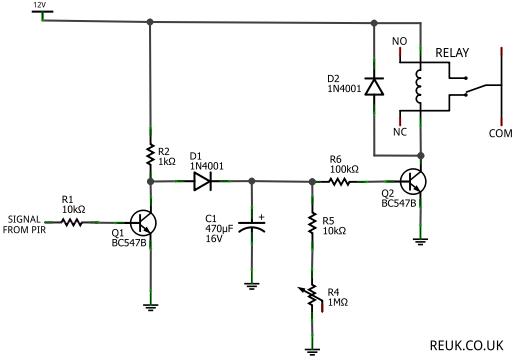baxterdmutt
Member
Hi Les,Yet another alternative would be to drive the relay directly from the sensor but use a normally closed contact on the relay to drive the load. This has the disadvantage the the relay will be energised for most of the time thus consuming some power. Here is an explanation for baterdmutt's benefit. The normally closed contact on the relay will allow current to pass when there is no current passing through the relay coil. As the contact on your sensor is closed when it is not activated the relay coil will have current passing through it. This mean that the normally closed contacts on the relay will be in the open state so no current will pass to the load. When the sensor is activated its contacts open causing the relay coil to be de energised which means that the relay's normally closed contact will now be closed. The relay is behaving as the NOT gate you wanted to use.
Les.
That was my first thought, but I don't have any N/O relays (lots of N/C ones). The relay would be energized almost constantly and I didn't like that idea. I thought I could use a latching relay but then I'd have to figure out how to send a signal to turn it back off. I just figure transistors would be simplest. Thanks for the idea though.


